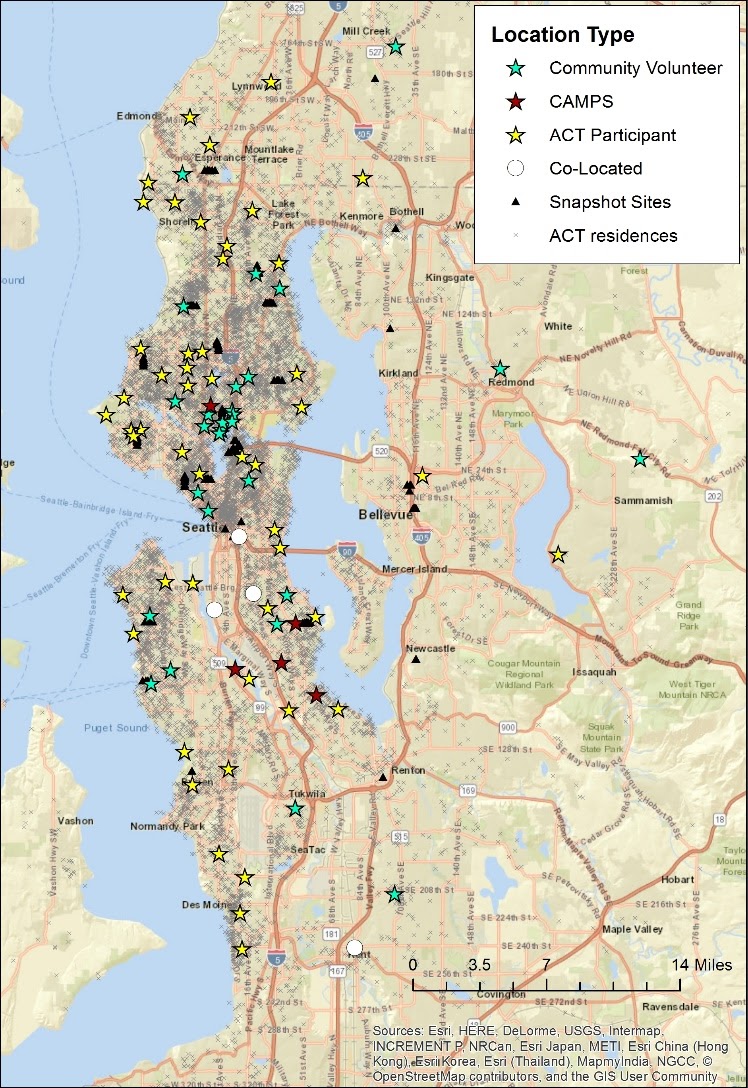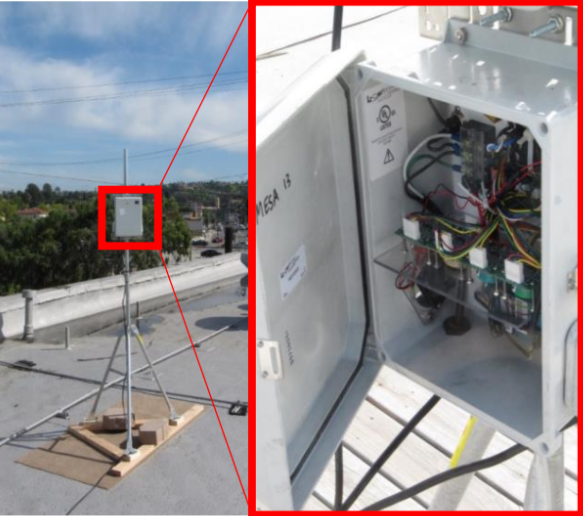Optimizing exposure assessment for inference about air pollution effects, with application to the aging brain
Go To: Project goals | Low-cost Monitoring Campaign| Mobile Monitoring Campaign | Study Aims | Contact us
Project Goals
This project builds upon the ongoing Adult Changes in Thought Air Pollution (ACT-AP) study. Its overarching goal is to learn how to best design exposure assessments and optimally analyze them for application to air pollution cohort studies. This will allow us to make recommendations on the most cost-effective and high quality exposure assessments for understanding air pollution health effects. In addition, the project will focus on less commonly studied pollutants on brain health, which has policy relevance.
This study will compare and contrast two different exposure assessment campaigns conducted in the ACT-AP study. One is a supplemental low-cost sensor (LCS) monitoring campaign to combine with pollutants measured by the regulatory monitoring network. The second is a mobile monitoring study designed specifically to target the ACT-AP cohort. The table to the right lists the pollutants we have measured in one or both campaigns. These pollutants are particulate matter (PM2.5), black carbon (BC), ultrafine particles (UFP), nitrogen dioxide (NO2), nitrogen oxides (NOx), ozone (O3), and carbon monoxide (CO).


Low-cost Monitoring Campaign
The photo below is a picture of one of the low cost sensors, which are about the size of a lunchbox. The low cost sensors were placed throughout the community, mostly at ACT participant homes, as shown on the map to the left. The sensors collected data for about four weeks in two seasons during 2017-2018. Using these data, we use a space-time prediction model to estimate air pollution for ACT cohort members.

Mobile Monitoring Campaign
For the mobile monitoring campaign, we chose 308 locations representative of the ACT cohort. During March 2019 through March 2020, each site was visited approximately 28 times during all four seasons, seven days of the week, and most times of the day. The sites were visited by following the various routes shown on the map to the left. The vehicle used to follow the routes was a Prius specially outfitted with air pollution measurement instruments.



Study Aims
Our study has four specific aims. These focus on 1) the role of exposure assessment study design in high quality exposure predictions, 2) the ability of novel statistical methods to improve exposure predictions, 3) the implications of the predictions developed in the first two aims to improve understanding about the impact of air pollutants on brain health, and 4) the costs, benefits, and logistical constraints of different exposure assessment designs.
This is a three-year project. The first half of the project will focus on the exposure prediction activities (aims 1 and 2) while the second half of the project will incorporate inference about health effects (aim 3) and the logistical considerations (aim 4).
Contact Us:
Research Team:
Lianne Sheppard, PhD
Principal Investigator
University of Washington
206-616-2722
sheppard@uw.edu
Adam Szpiro, PhD
University of Washington
206-616-6846
aszpiro@uw.edu
Ali Shojaie, PhD
University of Washington
206-616-5323
ashojaie@uw.edu
Amanda Gassett, MS
Project Coordinator
University of Washington
206-897-1990
agassett@uw.edu
Project Consultants:
Edmund Seto, Tim Larson, Julian Marshall, Sara Adar, Joel Kaufman, Eric Larson, Gail Li, and Paul Crane.